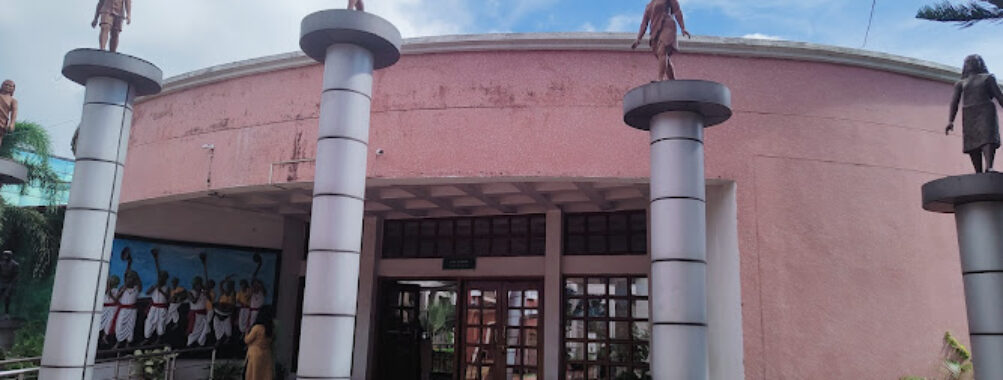
State Museum
“`html
Table of Contents
Description
The State Museum stands as one of those rare places where history feels alive, not just displayed behind glass. It’s a space that quietly hums with stories—some ancient, some modern—but all deeply tied to the identity of Jharkhand and its people. You walk in expecting a typical museum visit, but it somehow ends up feeling more like a journey through time and tradition. The museum’s ethnographic and cultural heritage collections are genuinely fascinating, especially if you’re curious about the region’s tribal roots, art forms, and the evolution of local craftsmanship. I remember my first visit—thinking I’d spend maybe an hour, but three hours later I was still wandering through the sculpture gallery, completely caught up in the intricate stone carvings and the quiet dignity they carry.
What I love most is how the museum balances grandeur and simplicity. The galleries are well-organized, but not sterile. You’ll find colorful murals alongside ancient artifacts, and the combination somehow works beautifully. The sculpture and painting galleries are particularly impressive, showcasing both traditional and contemporary artists. It’s not just about admiring art—it’s about understanding the stories behind it. And if you’re lucky, you might catch one of their live performances, which add an entirely new dimension to the experience. Watching local artists perform traditional dances right in the museum courtyard feels like stepping into a living piece of heritage.
The museum is also surprisingly inclusive. It’s wheelchair accessible throughout, with accessible restrooms and parking, which is something I always appreciate. Families often bring their kids here, and it’s a good spot for them too—there’s enough color, movement, and storytelling to keep young minds engaged. It’s not a place that overwhelms you with information; instead, it invites you to explore at your own pace. Sure, there are a few corners that could use a touch of maintenance or better lighting, but honestly, that’s part of the charm—it feels real, not overly polished.
Key Features
- Extensive ethnographic and cultural heritage exhibits representing Jharkhand’s diverse communities
- Dedicated sculpture and painting galleries showcasing both traditional and modern works
- Occasional live performances featuring regional dance and music
- Wheelchair accessible entrance, parking, and restrooms for inclusive access
- Family-friendly environment suitable for children and group visits
- Clean restrooms available on-site
Best Time to Visit
If you’re planning a visit, the cooler months—from November to February—are the most comfortable. The weather is pleasant, making it easier to enjoy both the indoor galleries and the surrounding outdoor areas. I once went during the monsoon season, and while the lush greenery outside was stunning, the humidity made it a bit harder to linger in the open spaces. Weekdays are usually quieter, which means you can take your time without the bustle of weekend crowds. And if you can, try to visit in the late afternoon—the natural light filtering through the museum’s windows gives the exhibits a warm, almost cinematic glow.
How to Get There
Reaching the museum is fairly straightforward. It’s located within a major sports complex area, which makes it easy to spot on most maps and navigation apps. Local taxis and auto-rickshaws are readily available, and they usually know exactly where to go if you mention the State Museum. If you’re coming from the city center, it’s about a 20–30 minute drive depending on traffic. For those who prefer public transport, local buses run nearby, though I’d personally recommend a cab for convenience—especially if you’re carrying a camera or plan to stay till closing time. And yes, parking is available and accessible, which is always a relief when you’re traveling in a group.
Tips for Visiting
Here’s what I wish someone had told me before my first visit: bring a bottle of water and wear comfortable shoes. The museum isn’t massive, but you’ll still find yourself walking quite a bit, especially if you like to linger at each exhibit (like I do). Photography is usually allowed in most sections, though it’s best to check with the staff before snapping away. They’re friendly and more than happy to share interesting tidbits about the displays if you ask.
Try to arrive earlier in the day—it gives you time to explore without feeling rushed. And if you’re traveling with kids, encourage them to engage with the cultural displays; it’s a great way to introduce them to local history in a fun, visual way. One more thing—don’t skip the sculpture gallery. Even if you’re not an art enthusiast, the craftsmanship there is jaw-dropping. You might even find yourself standing in front of a single piece for minutes, just absorbing the detail. I’ve done that more times than I can count.
Overall, visiting the State Museum isn’t just about ticking a box on your travel itinerary—it’s about connecting with the spirit of Jharkhand. It’s where the past and present coexist beautifully, where stories are told not just through words but through stone, color, and rhythm. If you’re the kind of traveler who loves places that make you think and feel at the same time, this museum deserves a spot on your list.
“`
Location
Places to Stay Near State Museum
Find and Book a Tour
Explore More Travel Guides
No reviews found! Be the first to review!